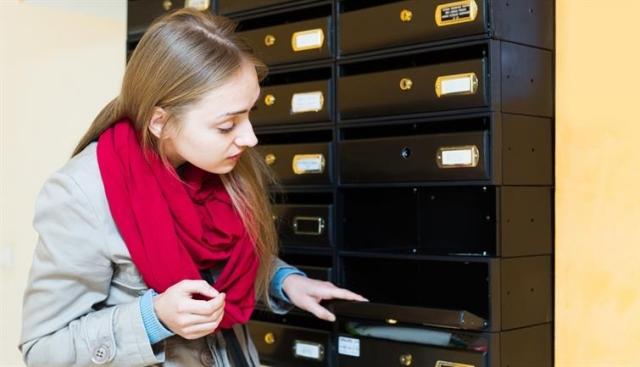In 2019, almost 36 million people changed their address, according to the USPS. With nearly 10 percent of the US population moving every year, certain details could get overlooked among the packing boxes and masking tape. Before you find yourself standing in front of an empty mailbox wondering how you forgot to notify the USPS about your move, here’s what you need to know about your change of address.
How to Notify The USPS About Your Change of Address
First, if you have a credit card, an email address, and $1.05, you can change your address online. Select who is moving, fill out the information form, choose whether the move is permanent or temporary, then provide the date you’ll want your mail to start being forwarded. You’ll also want to provide your old and new address. Finally, pay the $1.05 using your credit card. The USPS doesn’t really want your dollar (and nickel), but this charge is used to verify your identity and prevent fraud.
If you don’t have an email address or a credit card, or you’d rather not pay $1.05, you can go in person to your local post office and ask for a Mover’s Guide Packet. The packet will contain a PS Form 3575. Simply fill out this form and give it to the postal worker or drop it in the mail slot inside the post office. There’s no fee for this method, and in roughly five days, you’ll get a confirmation letter stating that your address change was received.
How to Forward Your Mail
Your mail will automatically be forwarded starting on the date you give to the post office when you follow the steps above. Try to do this two weeks before you move to allow time for the post office to reroute your mail. Once you complete this step, most of your mail will be forwarded. But just because you’ve updated your address with the USPS, that doesn’t mean everyone knows your new address. You’ll also have to update your address with the DMV (Department of Motor Vehicles), your insurance companies, your bank and credit card companies, and your voter registration office.
Norify The DMV When You Move
While changing your address online is the same process for every state, the process isn’t quite as simple with the DMV. First, you’ll need to find your state DMV. Under “State Agencies,” choose “Motor Vehicle Offices.” Then, find the link for changing your address and read the requirements. Some will allow you to do this online, and in some states it is free. For example, in Georgia, you’re allowed one free address change per term. If you move again, you’ll have to pay to renew your license.
In Iowa, you can change your mailing address online, but they won’t send you a new license or ID card through the mail. Changing your address online only changes where the DMV sends your official notices. If you want a new license with your new address, you have to go in person to the DMV and bring along documentation proving your new address. There’s a $10 fee to change the address on your license in Iowa.
If you live in California, you can complete a form online, by mail, or in person. It takes anywhere from five to 10 days for your address to be changed, depending on the method you choose.
While the process varies, most states require several days to process the request, and there’s often a timeframe after you move in which to get this done (typically between 10 to 30 days after you move). If you don’t change your address with the DMV in the allotted time, you could face a fine.
Do you need to contact the IRS when you move?
When you file your taxes, you can use your new address and that will be notification enough. However, if you are expecting a tax refund or other correspondence from the IRS before you file your taxes, you might want to go ahead and let them know about your change of address, even if you changed your address with the USPS (some post offices won’t forward government checks).
If the IRS tries to reach you for some reason, they will send a notice to your last known address. Legally, this is all they are required to do. If you moved and didn’t get the notice, it doesn’t matter. Legally, you can be held accountable for not responding to the notice because it’s your responsibility to notify the IRS of your new address.
To notify the IRS, you can call them directly. If you do this, be prepared to give them your full name, your old and new addresses, your date of birth, and your social security number. If you don’t have a social security number, you can use your ITIN (Individual Taxpayer Identification Number). If you’d rather do this by mail, you can fill out a Form 8822 and mail it to the applicable address for your state (listed on the form).
What is my move is temporary?
If you are going to another state for an internship or for a temporary work assignment, ask your local post office to change your address temporarily. Go to the USPS website and choose “Temporary” instead of “Permanent” as you fill out your change of address information. Keep in mind, a temporary change of address is for those who will live at a different address for less than six months, then move back to their old address. If you aren’t returning to your old address, even if the move is only temporary, you’d fill out a permanent change of address form. For example, if you have an internship that lasts four months but you plan to move to a different place after and not return to your previous address, you would still be making a permanent move (you’ll fill out a permanent address change for each new location).
If you will be away from your permanent residence for 30 days or less, you don’t need to have a temporary address change. In this case, you’ll want to put your mail on hold. If you have a roommate or there’s someone else that shares your address, be aware that a hold mail request will hold all mail, including letters and packages, for all individuals at the address. The post office won’t just hold your mail and allow your roommate to keep getting theirs.
Other Agencies to Contact About Your Change of Address
As you start notifying agencies of your change of address, you might discover that more people need your new address than you realized. For example, if you are a veteran, you might need to notify the Department of Veterans Affairs. If you receive social security benefits, you might need to contact them and let them know you’ve moved. Here are some additional agencies you might want to contact after you move:
Department of Veterans Affairs (VA)
If you are a veteran, you’ll want to contact any of the VA benefits and services you use directly to change your address with them. To update your address with the VA in general, sign in to VA.gov.
Social Security Administration
Those receiving Social Security benefits or Medicare will want to change their address online. If you don’t already have one, you can create a my Social Security account. From here, navigate to the “My Profile” tab to update your information.
US Citizenship and Immigration Services (USCIS)
Changing your address with the USPS doesn’t change your address with US Citizenship and Immigration Services (USCIS). To make sure you’re getting mail from this agency, you’ll want to update your address with the USCIS as well as with the USPS. If you have an account with the USCIS, you can sign in and update your address. If you don’t, you can fill out this form.
State Election Offices
Don’t wait until it’s time to vote only to realize you forgot to change your address! Find your state election office to learn more about the laws in your state. If you are moving to a new state, you’ll want to register to vote in that state since each state keeps track of their own voter registrations. Just because you were a registered voter in your previous state, that doesn’t make you a registered voter in your new state.
If you are moving to a new location in the same state, you’ll still want to update your information. Your address determines your voting district and your assigned voting location, so be sure to keep this information current.
Where Else to Change Your Address
Now that you’ve notified the USPS, the DMV, your insurance companies, your bank and credit card companies, and all of the other agencies that apply to you, you’re done! Right? Well, there are a few additional places that you might not have considered. For example, make sure your address is correct in these places, as well:
- Your previous landlord (to get your security deposit back)
- Your employer (your company needs your correct address on file)
- Your previous employer (if you changed jobs, make sure your previous employer has your new address in case they need to send you tax documents and other notifications)
- Your utility companies
- Your doctors, dentist, and other medical providers
- Any apps that are location-based
- Delivery services (you don’t want your food delivery box going to your old address!)
Whew! That should do it — unless, of course, you haven’t yet given your new address to all your friends and family. You wouldn’t want Great Aunt Edna’s hand-knitted scarf and matching mittens delivered to the wrong address this winter! Consider sending out a general moving announcement to friends and family to make sure everyone has your new address. Now that everyone is notified, go tackle those moving boxes!






